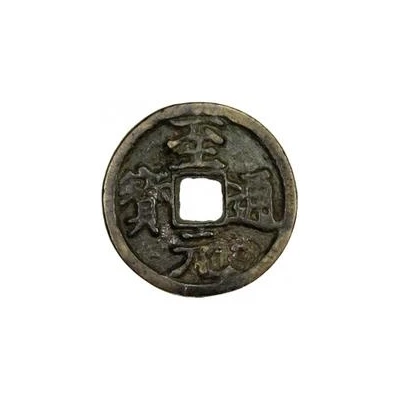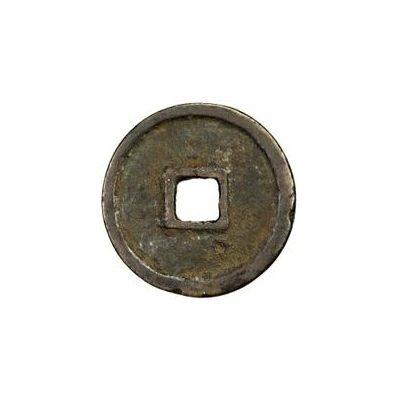Fractional cash - Zhiyuan Tongbao; with crescent and dot; temple coin ND
| Bronze | - | 23 mm |
| Issuer | Empire of China |
|---|---|
| Emperor | Yuan dynasty › Ukhaghatu Khan "Huizong" (元惠宗) (1333-1368) |
| Type | Token |
| Years | 1335-1340 |
| Value | Fractional cash (½) |
| Currency | Cash (621-1912) |
| Composition | Bronze |
| Diameter | 23 mm |
| Shape | Round with a square hole |
| Technique | Cast |
| Orientation | Medal alignment ↑↑ |
| Demonetized | Yes |
| Updated | 2024-10-03 |
| Numista | N#221872 |
|---|---|
| Rarity index | 100% |
Reverse
Blank (uniface).
Edge
Plain
Comment
During the Yuan dynasty, there was a preference for paper money and silver ingots, making actual coins scarce or rare. However, the Yuan dynasty emperors supported Buddhism, and allowed temples to cast their own statues and artifacts. These temple coins were originally cast as offerings to Buddha, but due to their metal content, they still had an intrinsic value. While they were not official issues, these were widely accepted and used as small change in the markets.With these not being official issues, there are different diameters and weights possible. The average weights seem to be around 1/2 Cash, but smaller and larger weights exist.
Interesting fact
One interesting fact about the Token Fractional cash - Zhiyuan (Tongbao; with crescent and dot; temple coin) ND (1335-1340) from Empire of China made of Bronze is that it was used as a form of currency during the Yuan Dynasty, which was established by Kublai Khan, the grandson of Genghis Khan. This coin was used alongside other forms of currency, such as paper money and silver, and it was valued at a fraction of the standard cash coin. The crescent and dot symbol on the coin represents the Islamic influence on the currency, as Islam was an important religion in the Mongol Empire. Additionally, the temple coin designation suggests that this coin may have been used in religious contexts or as an offering in temples.

